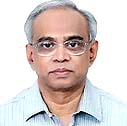|
05/10/2015 Competitive Politics and State’s Development
|
In their zeal to give voice to the electorate, the electronic media has been eliciting the expectations of the voters in the different parts of Bihar from the new government. Most of the responses relate to local issues such as condition of roads, supply of water and better health facilities. These also get mentioned under the banner of “Nitish Nischay” of JD (U) led coalition. These are, however, concerns that are best addressed by the third tier of government, that is, the Gram Panchayats and the Urban Local Bodies. There is, therefore, an urgent need to devolve greater power to these bodies. It is, however, not clear if the various parties in the election fray are enthusiastic about transfer of greater powers to these bodies. State level issues that need to be discussed and debated, on the other hand, are supply of electricity, major and minor irrigation works, road network and public transportation. We may add to this list the subject matters of land reforms, employment opportunities for landless labour and industrialization in the state. Somehow, these issues do not appear to get the attention of different political parties they deserve. Land reforms captured the imagination of people at the time of independence. The zamindari system was abolished soon after and ‘land ceiling’ introduced to acquire surplus land. While this led to acquisition of two lakh hectares and distribution of one lakh hectares to the actual tillers (another one lakh hectares being under litigation), this also led to eviction of tillers/share croppers from ‘khas land’ on the landowners taking possession of these land for personal cultivation. Over the years, the pressure of population on land has been on the rise. This has led to division of land amongst the landowning class and has pushed up the price of land. The per capita availability of land (net sown area) that was 0.26 hectares in 1951 had come down to 0.07 hectares by 1981. Scope of acquiring surplus land for distribution to the landless is, therefore, far from encouraging unless the upper ceiling of land is further reduced. Here again, there is hardly any stand being taken by the different parties in their election campaigns. A ray of hope in the state arises from the high per cent of net sown area to total area at 78.98 per cent, and easy availability of both surface and ground water. Out of the net sown area of 74 lakh hectares, the net irrigated area is estimated to be 75 per cent which can be further increased. Around 3 lakh hectares is water logged due to recurrent floods and bad designing of rail and road embankments. The existing irrigation potential, furthermore, is not being fully utilised in the absence of adequate power supply. According to one expert committee, a battery of tube wells and pump sets may be installed in identified ‘white’ and ‘grey’ blocs of ground water reserves to serve the twin objectives of irrigation during the lean seasons and drainage of excess water after the floods. In regard to surface irrigation, similarly, there are pending projects on various rivers like the North Koel, the Kosi, the Gandak and the Burhi Gandak. Once again very little attention seems to be paid to these aspects by the different political parties. Needless to say, expansion of irrigation will augment the ‘gross sown area’ and increase production. It will also give boost to employment opportunities for the landless labourers. It is worth mentioning that a large section of scheduled caste population (around seventy per cent), a significant majority of backward classes (around thirty-five per cent) and a section of higher castes (roughly five per cent) are landless and earn their livelihood through wage labour in agriculture. Numerically, people from the backward classes (including muslims) constitute the largest number of landless labourers. Around 53 per cent of villages in the state are not electrically connected. Supply of electricity to the state is, moreover, more from the national grid than generated within the state. Since electricity is under the Concurrent List (of the Constitution), the Central Government has stepped in to augment the supply of electricity from its Central Public Sector Enterprises like NTPC and NHPC. This has helped all the states in a big way. In the light of severe shortage of electricity in Bihar, however, the State Government needs to take up this issue with the Centre. It could easily be an election plank, but so far it does not appear to be on the agenda of the political parties. The demand for grant of ‘Special Status’ to Bihar by the JD (U) led coalition and the promise of the P.M. to transfer Rs.1.25 lakh crore to the state from the Centre on behalf of the NDA led coalition provide a glimpse into the competitive politics in the current elections . The details of this transfer are, however, not in the public domain. Significantly, the award of the Fourteenth Finance Commission relating to transfer of resources from the Centre to states has come on the eve of this state election. Under the new formula, there is an increase in the transfer of funds to Bihar by Rs13,279 crore during 2015-16 over 2014-15. On a five year period, this works out to Rs.66,395 crore. It is true this increase goes hand-in-hand with reduction in transfer of plan funds arising from scrapping of some of the Centrally Sponsored Schemes (CSS). Nevertheless, since around seven CSS schemes such as MNREGA, Sarva Siksha Abhiyan, JNNURM and National health Mission etc. are being continued, there would be additional transfer of funds to the state on these accounts. Together with these schemes, it may not be difficult to reach the figure of 1.25 lakh crore over a period of five years. Given the low income opportunity for the poor (including women) in the state, there could be a demand to increase the number of days of ‘right to employment’ under MNREGA from 100 days to more number of days. It appears the NDA led coalition has declared they would increase it to 150 days; in this respect they have scored over others as there is no mention of this issue by the other parties. The state is dotted with sugar and textile mills, gems and jewellery industry, wood manufacturing, fertiliser plants and industrial units producing power generator sets, pump sets and fans as well as numerous repair units. Since a good many of these units are lying closed, one expected the political parties to take up their cause. Moreover since the state will have more resources now, it may go for Joint Ventures (JVs) with Central Public Sector Enterprises as well as with the private sector to set up new enterprises. Not much is heard, however, in regard to industrialization of the state in the ensuing election. Transportation, tourism, health care, higher education, micro-finance and IT industry in the service sector are all in need of support by the government. Different innovative policies may be put forth for their development. There is, however, no reference to these areas in the various pronouncements being made by the different political parties in their election campaigns. * Dr Sharat Kumar is former Senior Adviser to Government of India. He has to his credit two books on Bihar published earlier in 2001 and 1992.
|
|

 The per capita income of Bihar at Rs.31,229 per annum was less than half the all-India per capita income of Rs.74,380, in 2013-14. This was despite the exemplary performance in growth rate of the State Domestic Product (SDP) of 22 per cent during the period 2004-05 to 2013-14. One of the factors that did not allow the per capita income of the state to come up to the national level has been the higher growth rate of population in Bihar. While the population of the country grew at the rate of 17.7 per cent during the period 2001 to 2011, it grew at the rate of 25.4 per cent for Bihar. Barring a minor reference of Nitish Kumar to this issue where he referred to a study that established a link between education of the girl child and decline in the birth rate, it is hardly an issue during this election to the Bihar legislature in October this year.
The per capita income of Bihar at Rs.31,229 per annum was less than half the all-India per capita income of Rs.74,380, in 2013-14. This was despite the exemplary performance in growth rate of the State Domestic Product (SDP) of 22 per cent during the period 2004-05 to 2013-14. One of the factors that did not allow the per capita income of the state to come up to the national level has been the higher growth rate of population in Bihar. While the population of the country grew at the rate of 17.7 per cent during the period 2001 to 2011, it grew at the rate of 25.4 per cent for Bihar. Barring a minor reference of Nitish Kumar to this issue where he referred to a study that established a link between education of the girl child and decline in the birth rate, it is hardly an issue during this election to the Bihar legislature in October this year. 
